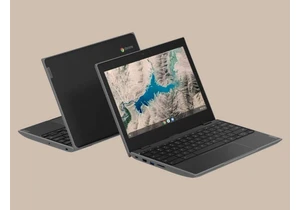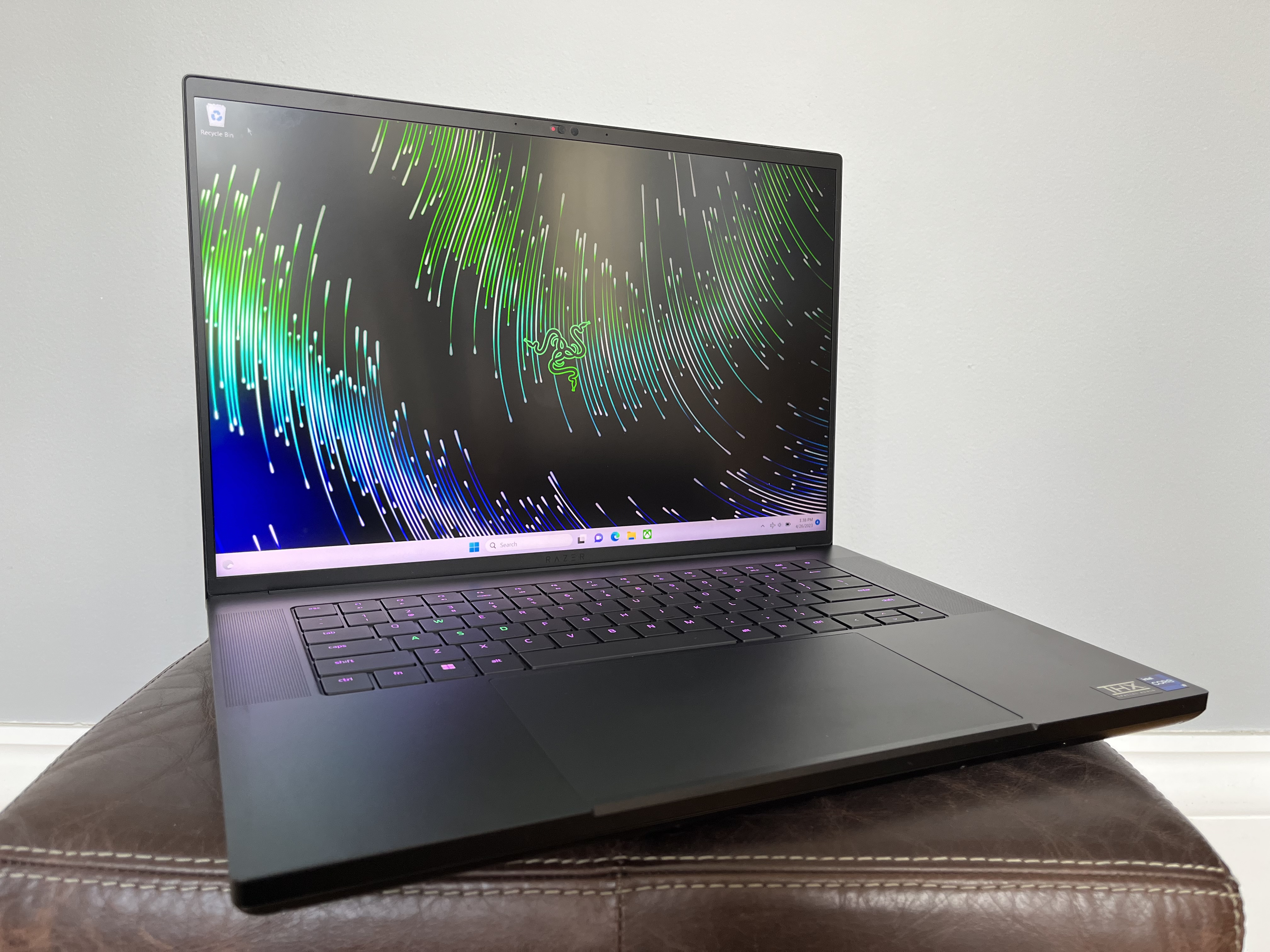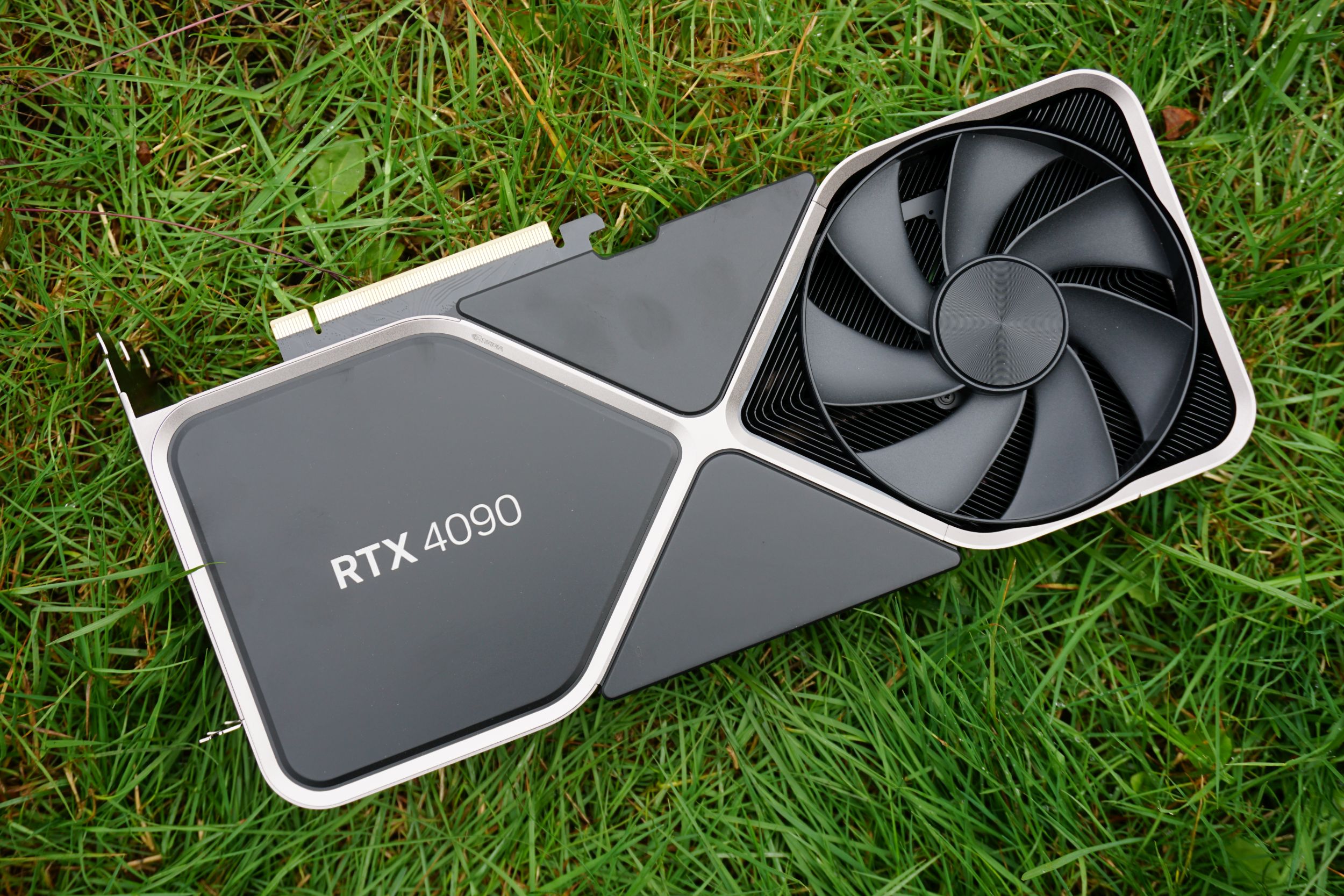Imagine the scene: It’s a quiet Friday Night. You comfortably sit down to play—finally, it’s game time after a long week. How about firing up Cyberpunk 2077 and seeing what “Path Tracing” Overdrive mode is all about? You heard it was gorgeous, and highly demanding on even the mightiest hardware.
Your senses struggle to take in everything you’re witnessing. Your eyeballs almost melt from the searing 1,000 nits brightness of the mini-LED screen. They’re then soothed by the gorgeous crispy 4K and massaged by the punchy colors. HDR accentuates every little detail of these path traced lights. The game’s neon signs are so vibrant that they’re almost etched into your retina! Dark corners of the game look clear and detailed, with satisfyingly deep blacks.
Something else draws your attention: Is it raining outside? No—it’s not. You realize the enveloping surround effects of the speakers have made the sound wrap around you, like a warm blanket. You quickly become part of the world you’re gaming in, and the 4K performance is perfectly smooth. Nvidia’s DLSS 3 technology makes even the most stubborn frames subject to focus on serving you a great gaming experience.
Fully immersed, you miss your train’s stop home. No problem—you unplug your Razer Blade 16 laptop from the outlet and slip it into your bookbag. At a smidgen over five pounds, you have no trouble walking the rest of the way home.
This fire-breathing laptop stole this desktop gamer's heart
My friends, I have been a desktop enthusiast gamer for over 20 years. I put aside my desktop rig for the last several months and have been engrossing myself in the modern gaming laptop experience, and I was blown away by modern offerings like the Razer Blade 16 and its powerful GeForce RTX 4090. They’re surprisingly versatile, with some even allowing overclocking and tuning!
It’s been a surprisingly great time—but not all roses.
After several weeks of testing, I wanted to share the shocking highs I’ve experienced when choosing to game on a powerful laptop, as well as compromises you should be aware of. It’s certainly not for everyone, but there’s magic to behold for those who wander further.
Be sure to subscribe to Thiago’s YouTube channel, Classical Technology, for detailed PC analysis like the video below and near-daily coverage of graphics card trends.
The bad news
Let’s get the drawbacks out in the open first, so we can have a frank and open discussion. I want to focus on the gaming experience, but there some harsh realities that mobile gamers will face:
Price
Fire-breathing laptops like the Razer Blade 16 are high-end, premium products. Packing specs such as Intel’s Core i9-13950HX CPU and Nvidia’s ferocious GeForce RTX 4090 graphics, you’ll pay a pretty penny. While you can find RTX 4080 and RTX 4090 laptops in the low to mid $2,000 range, some models will easily cost more than $4,000. The Razer Blade 16 costs $4,299. (That said, if you don’t need the utmost performance, there are solid 1080p gaming laptops available under $1,000.)
Desktops
the desktop rtx 4090 is even more powerful
Yes, building your own gaming desktop will always provide more raw value than gaming laptops. You can build your own desktop setup for an even higher tier gaming experience, for cheaper. Some people prefer (or even absolutely need) a mobile solution, however. There are many valid use cases to justify the extra expense.
Remember, you’re getting some insane performance that can slip into your backpack and sip power compared to energy-hungry desktops.
Cooling and battery life
That said, gaming laptops run hot. Fans start spinning the second you start gaming, and there’s a lot of cooling variation between gaming laptops. The aluminum Razer Blade 16 feels warm to the touch, for example, but its fans mostly deliver an agreeable tone and loudness. You’ll want to raise the laptop with a simple stand for better performance.
The battery life of gaming laptops also disappoint compared to simpler productivity notebooks. You can game for maybe an hour away from an outlet, but you’ll want to be plugged in while playing the majority of the time. While the Razer Blade 16 offers surprisingly good battery life outside of gaming—hitting 7 hours in PCWorld’s video battery rundown test thanks to Nvidia’s Advanced Optimus technology, which switches to integrated graphics for light loads—this breed of machine really does need plugged-in power to maximize performance.
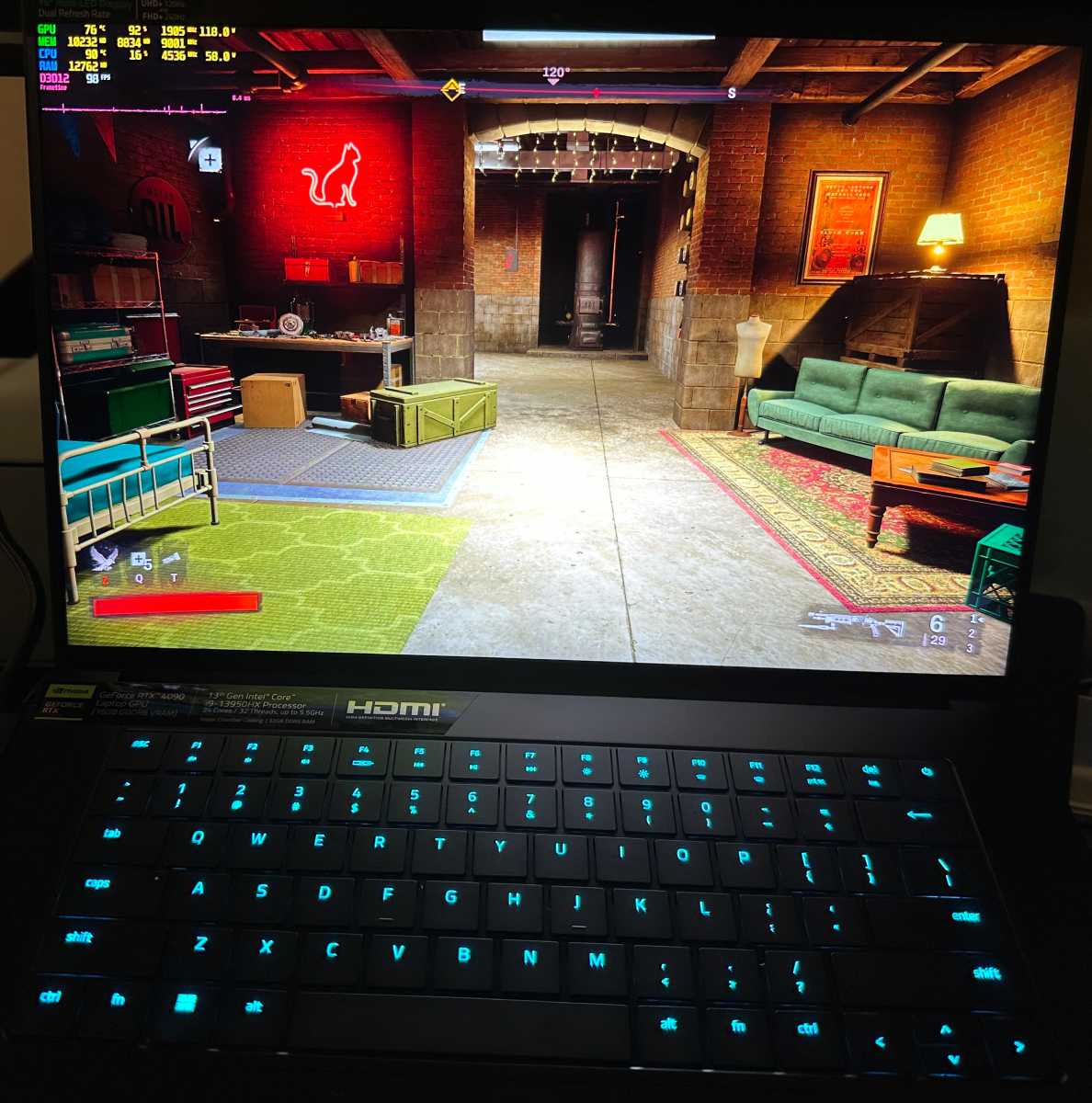
Redfall HDR and Light effects Look great on the Razer Blade 16 Mini-LED. The keyboard RGB isn’t bad either!
Thiago Trevisan
Issues to note
Nvidia drivers have been hit-or-miss for some RTX 40 series notebooks. There is a known issue where some laptops with drivers newer than 528.29 will have random black screens or lockups. When it works, it’s smooth—but when you run into these issues, it can be a poor experience. I have not experienced this on the Razer Blade 16, but my Asus ROG Strix Scar 16 still locks up more than normal, so your mileage may vary.
I previously encountered various issues such as mini-LED screen flicker and a quirky touchpad on the Razer Blade 16, but those were rapidly resolved with firmware updates.
Now onto the good stuff!
High-end laptops deliver an excellent gaming experience
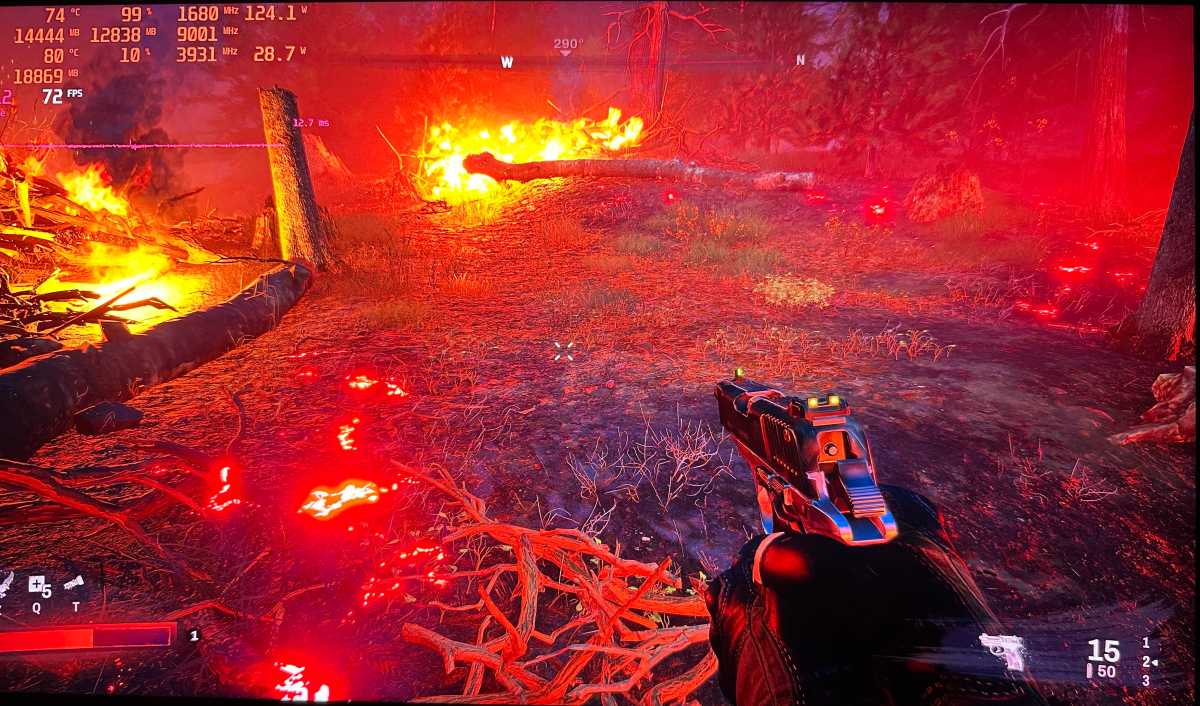
Redfall: Despite what the reviews say, the lighting still looks impressive on a mini-LED HDR screen.
Thiago Trevisan
The gaming experience is what you see, hear, and feel when using a system. After trying various RTX 40-series laptops this generation, the Razer Blade 16 was the one that consistently made me feel the most immersed in the experience.
For context, my desktop system runs an RTX 4090 GPU paired with an LG 42-inch 4K OLED—so any laptop has stiff competition. I am in no way suggesting the desktop experience is not superior, I am merely suggesting that you can have just as good as an experience with a great laptop.
Let’s discuss the details of what makes the gaming experience on this Razer Blade 16. First, I’ll describe some specific games, and then break down each element of the components that make the whole thing work.
Dead Space Remake and Callisto Protocol
These games are both very dark and atmospheric, with great lighting effects. The Razer Blade 16’s mini-LED screen was a revelation here. Deep, dark black levels contrasted with the most minute details when lighting effects pop off the screen with HDR. After experiencing the mini-led screen, even a high quality IPS display such as the 500 nit Razer Blade 18 panel felt dull and undefined, especially in very dark scenes.
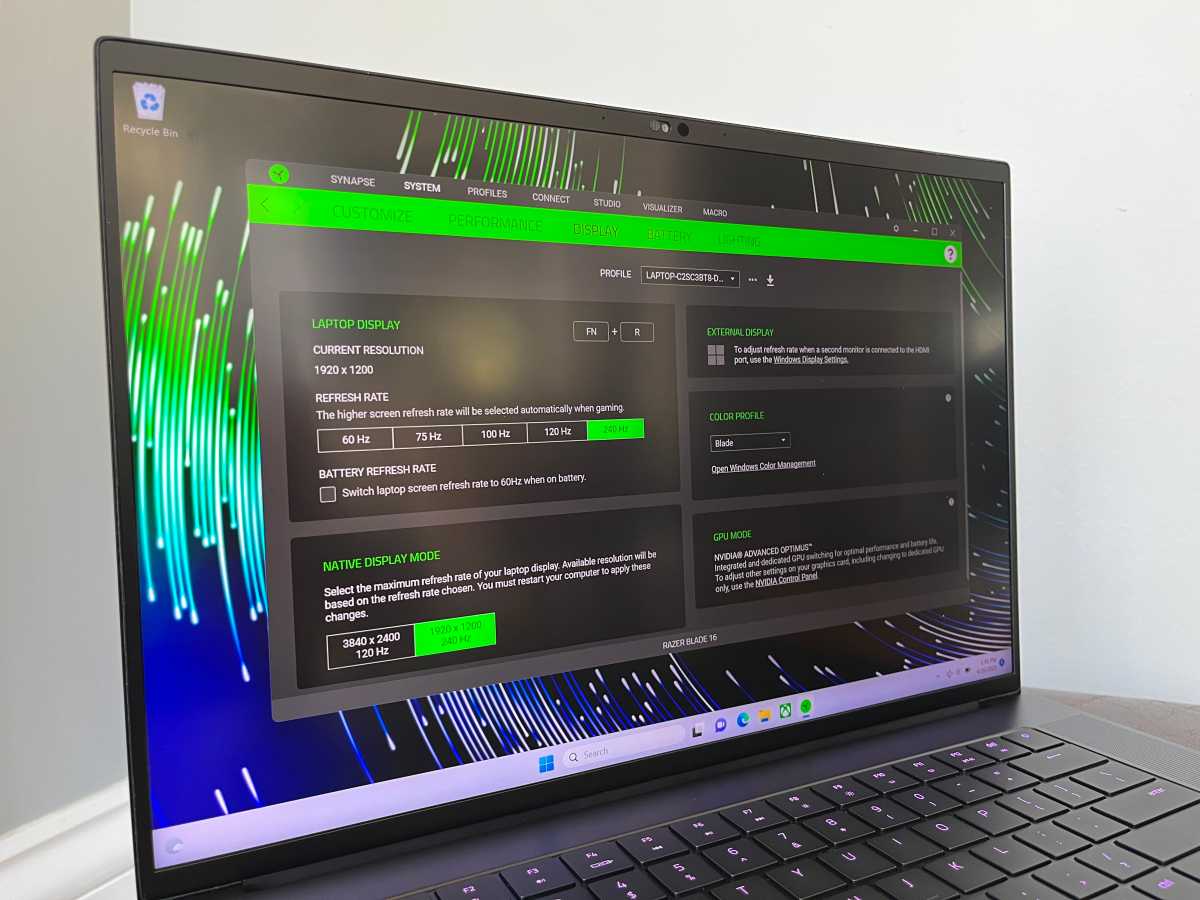
The display options for the Razer Blade 16’s killer mini-LED dual-mode screen.
IDG / Matthew Elliott
Overall performance was good, even at 4K with the help of DLSS in Dead Space Remake, and FSR in Callisto Protocol. These are not the smoothest of games, with some frame rate drops evident at times—but that’s more on the game optimization side than any issue with the hardware.
Hogwarts Legacy, Horizon Zero Dawn
Once again, vibrant colors absolutely dominate the experience here. While these games are typically better lit, even the darker scenes look stunning.
Performance is once again great in both titles, especially with DLSS 3 in Hogwarts, which offers a great gaming experience over 60 FPS even at 4K resolution with ray tracing. That’s wild for a gaming laptop, especially in such a demanding game. Sound is also crisp and crunchy in both titles, with dialog being super clear. It’s common to hear the voices sound like they’re really in your room, with great separation and surround effects. Razer nailed the Blade 16’s audio
Jedi: Survivor
How about brand new, deeply unoptimized games like Jedi Survivor? The Razer Blade 16 runs them pretty well thanks to its raw brute force power! 4K with ray tracing will get you some sub-60fps performance, but it’s close enough that it remains a smooth experience with AMD’s FSR feature active. I dropped it down to 1080p, and it looked 99 percent as good with significantly higher FPS.
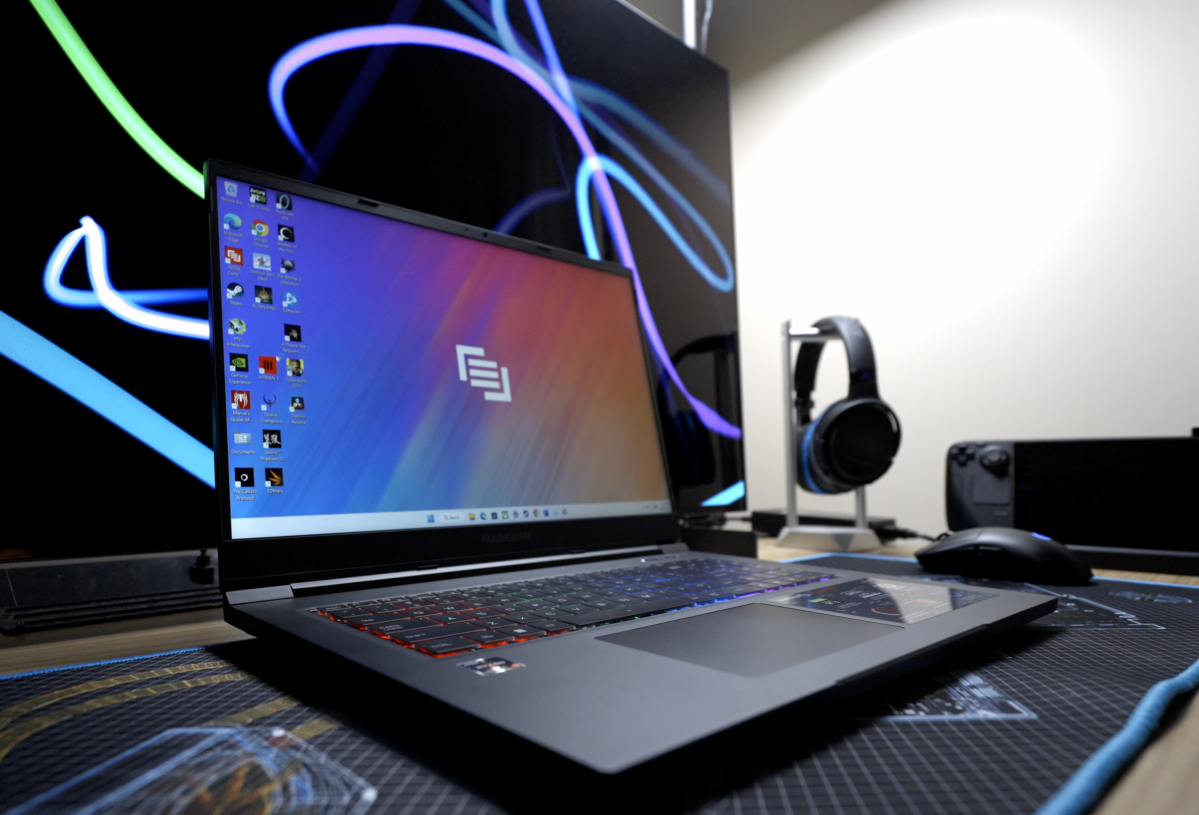
Gaming trifecta: Last gen maingear laptop, Steam Deck, and a big ol’ screen.
Thiago Trevisan
The sound is stellar, with surround effects throwing voices around and effects. The real star of the show is once again the mini-LED screen, with beautiful colors, crisp details, contrast, and brilliant HDR. The light saber almost pops out of the screen!
What makes the Razer Blade 16 special
The mini-LED screen
The Razer Blade 16’s 1000 nit mini-LED screen means it’s super bright, and better yet, colors and contrast look significantly better than other traditional IPS screens.
HDR can be tricky to properly implement and calibrate for certain games, but I found the Razer Blade 16’s screen well-tuned out of the box and it absolutely makes a tremendous difference in visuals. T
Accedi per aggiungere un commento
Altri post in questo gruppo

TL;DR: For a limited time, it’s only $249.99 (reg. $

The National Institute of Information and Communications Technology (
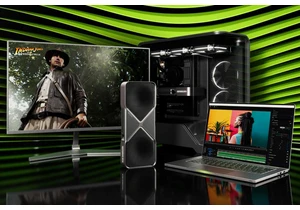
It’s possible to eject a graphics card while you’re using your comput

Transferring to a new PC can be a total time-suck — unless you’ve got

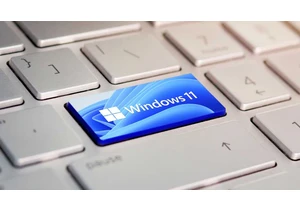
If you’re still on Windows 10, you have to know that Microsoft is end
